Blue-tongue Skink CARE SHEET:
Blue-tongue Skink CARE SHEET is where to find info on Blue-tongue skinks, Tiliqua sp. They are found in tropical forests of Australia, Indonesia and New Guinea. Their biology is the same in captivity as in the wild, so the captive environment should reflect the natural habitat as much as possible to meet their complex welfare needs. These include: the need for a suitable environment, a healthy diet; to be housed with, or apart from others; to allow normal behavior and to be protected from harm. This is a basic guide, so do your own research before getting a blue-tongue skink.
Blue-tongue Skink CARE SHEET:
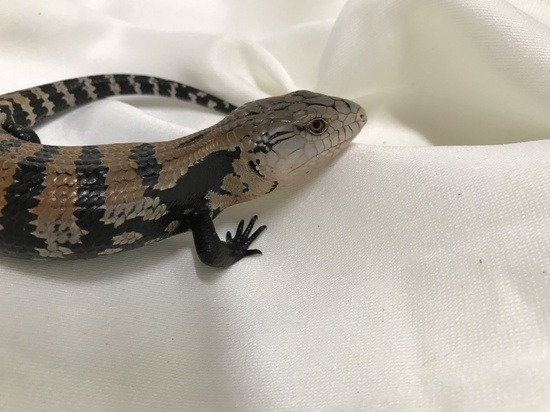
Biology:
Before acquiring a blue-tongue skink (BTS) you must be sure that you are able to provide the correct care and associated costs for its whole life. There are many species and subspecies available so you must be sure to have correctly identified the species you keep.
Blue-tongue Skink CARE SHEET:
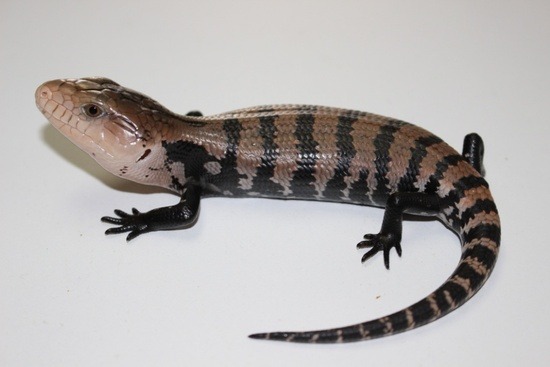
ENVIRONMENT:
The vivarium must be secure to prevent escape and free from hazards. A minimum 120 cm long by 60 cm high by 60 cm deep vivarium made from a solid, sealed material is advised for a single blue-tongue skink . Good ventilation is
essential to reduce the risk of bacterial build-up and infections. The vivarium should be placed in a safe location away from drafts, heat and direct sunlight to avoid temperature changes.
Blue-tongue Skink CARE SHEET:
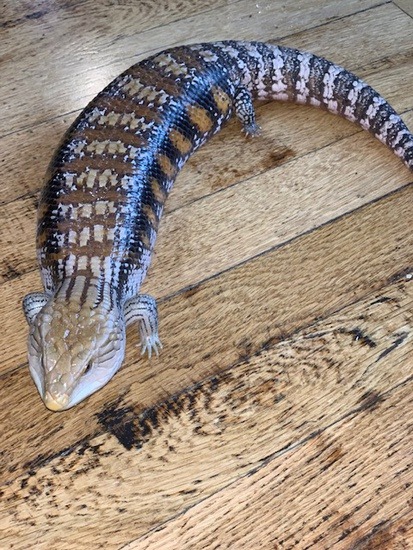
Temperature:
Reptiles are ‘ectothermic’ meaning they use their environment to warm up and cool down, so you need to create a ‘thermogradient’. This means positioning the heat source at one end of the vivarium, leaving the other end cooler, so the reptile can move around to regulate its body temperature. Create a ‘basking zone’ for your skink – the warmest
area in the vivarium. Use a suitable wattage halogen heat lamp or ceramic (non-light emitting) heater, pointing downwards. Heat lamps must be guarded to prevent burns, or injuries in case the bulb shatters.
Blue-tongue Skink CARE SHEET:
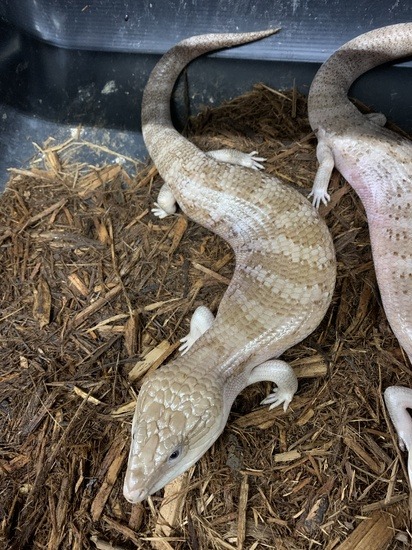
Thermostat:
A thermostat must be used with all heat sources. This is a simple device that measures the temperature and prevents the vivarium overheating, via a probe placed above the substrate. Adjust the thermostat temperature
and check with a digital thermometer that the basking zone is between 90-95°F. The cool end should measure 75-80°F. The temperature should only drop to 80-85°F at night so you may need to fit a ceramic heater with a thermostat.
Thermostats are not always accurate so it is essential to check the maximum and minimum temperatures daily.
Place the probe of one digital thermometer at the cool end and another at the basking zone. An infrared
thermometer can also be used to check the temperature in the basking zone and cool end daily. Skinks are diurnal (awake during the day) and like to bask half covered with substrate. They may also spend time out in the open, especially in the morning. Your skink will benefit from a wide stone placed in the basking zone. Choose a stone around 30 cm across to provide a secure platform but do not allow the skink’s back to get closer than 25 cm to the heat source.
Blue-tongue Skink CARE SHEET:
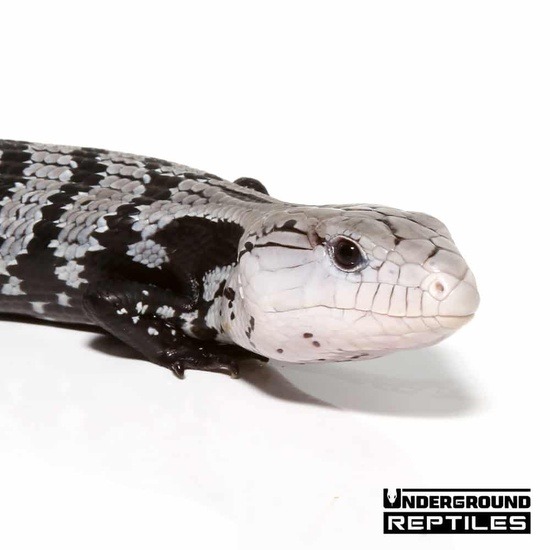
Humidity:
A hygrometer should be purchased to measure the humidity at the cool end of the enclosure. Blue-tongue skinks originate from many different localities, each with their own specific humidity. Humidity levels should be provided as appropriate for your exact species and locality. You can boost humidity by spraying the enclosure with clean water. If it is too high, the vivarium will need more ventilation.
Blue-tongue Skink CARE SHEET:

Lighting:
Reptiles use natural daylight to set their day and night patterns. Blue-tongue skinks have fairly thick skin that
offers some protection from the sun in the wild, so we need to provide an adequate source of light including ultraviolet (UV). Blue-tongue skinks can see part of UV light, called UVA, essential for their color vision. Another very important part is UVB, which allows the lizard to make vitamin D3. Vitamin D3 allows the lizard to store and use calcium, an essential mineral. UVB does not pass through glass windows so do not place the vivarium near a window. Instead, a reptile UVB lamp must be used inside the vivarium.
Blue-tongue Skink CARE SHEET:

Photo Gradient:
Create a ‘photo gradient’, from light to shade, by positioning your light source close to the basking zone. In a vivarium of 60 cm height, a 6% UVB tube, around half the length of the vivarium, should be fixed into the roof of the vivarium as far into the hot end as possible. Use a reflector of the correct length to direct the light onto your skink. The UVB output decreases over time so the UVB output should be checked regularly using an appropriate UV Index (UVA) meter positioned at the level of the animal directed towards the UV lamp. Blue tongue skinks require a gradient of UVB within their enclosure ranging from UVA 3.0-5.0 in the basking zone to zero in the shade.
Blue-tongue Skink CARE SHEET:
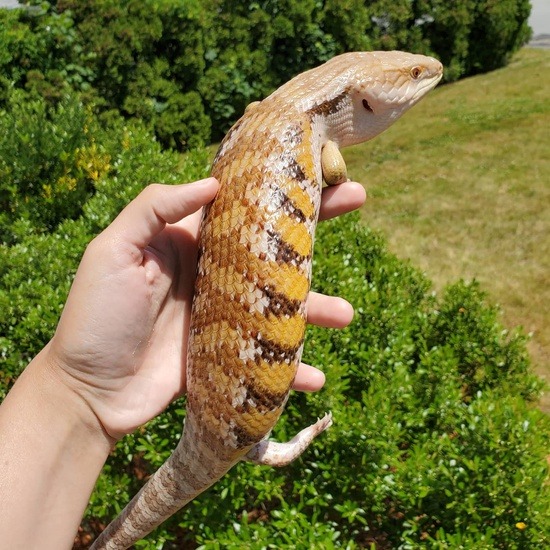
Bulb Maintenance:
The lamp must also be replaced according to the manufacturer’s instructions UV lamps must always be guarded to prevent burns, or injuries should the bulb shatter. Turn off all lights at night. Lamps can be controlled using a simple plug-in timer: 12 hours on during the day and 12 hours off at night.
Blue-tongue Skink CARE SHEET:

Cleaning:
Poorly maintained enclosures can become dirty quickly and create a health risk for you and your pet. Blue tongue Skink droppings are quite wet and will be made up from fecal waste (the dark part) and urates (the white part). Waste should be ‘spot cleaned’ as soon as it appears. The vivarium should be completely cleaned with a reptile safe disinfectant once a month. Carefully wipe the walls, glass and decoration. Reptiles can carry Salmonella, so
wash your hands before and after cleaning or handling to prevent the spread of infection.
Blue-tongue Skink CARE SHEET:

DIET:
Water:
Water is essential to the health and wellbeing of the blue-tongue skink. provide a large, shallow dish should be provided at all times with clean, fresh water placed in the cool end. Some skinks will drink standing water but
if not, you should lightly spray the vivarium with water every day or every other day, depending on the humidity, to allow the skink to collect droplets of water to drink as they do in the wild. Replace the water everyday and if your skink goes to the toilet in the bowl.
Feeding:
Blue-tongue skinks are omnivorous, meaning their diet should contain both plant and animal matter. Adult diets should consist of approximately 50-60% animal matter and 40-50% vegetables. Fruit should form no more than 10% of the diet. Varied, appropriately-sized, live insects should be provided, such as crickets, dubia cockroaches, and super worms. Any uneaten food should be removed as they can bite the skink. Eggs, canned dog food of an
appropriate brand and meat such as ground turkey, chicken and lean beef may also be provided. Frozen and thawed pinky rats and fuzzy mice should only be used as a treat.
Vegetation:
You need to research the safe plants, vegetables and fruits to feed. Avoid feeding too much spinach as this interferes with calcium absorption. Also avoid too much kale as this can affect hormone production. Remove uneaten green food every day and replace with fresh.
Alternate Diet:
An alternative option to the diet above is to use an appropriate formulated reptile diet for omnivores, which has the correct ratio of animal and plant matter. These are usually powdered diets that you mix with water. Feeder insects should be kept in a large, well-ventilated container. They should be fed safe vegetables and hydrated well for their own welfare and so that the nutrients are passed onto the skink.
Feeder insects:
Should also be ‘gut-loaded’ with vitamins and minerals by offering them an appropriate formulated gut-loading
diet 24-48 hours prior to feeding them to your skink. The captive environment does not supply all of the vitamins and minerals available in the wild so you also need to dust the food lightly with supplement powders. Ask your reptile vet for help with this.
Vitamins or minerals:
Can be overdosed so always follow the instructions. For example, with a well set UV system you do not need to provide high dietary D3 levels. Live or canned snails can be purchased from reptile shops. These greatly enrich the diet and behavior of the skink. Do not feed snails directly from outside, because they can contain pesticides or parasites.
Cracked quail eggs can help provide essential calcium and vitamin A as part of a varied diet. Blue-tongue skinks can easily suffer with obesity in captivity. This can be due to a high protein diet and restricted exercise. It is a good idea to weigh your skink once a month. Young skinks grow very quickly and will benefit from a little and often approach to feeding.
Blue-tongue Skink CARE SHEET:

BEHAVIOR:
Enrichment:
It is important to provide opportunities for natural behavior in captivity, called ‘enrichment’. Provide stones and branches for climbing. Appropriately sized hides or caves are essential for skinks to feel secure and should be placed in both hot and cool ends of the vivarium. Also provide a moist hide to create an area of higher humidity by filling a hide with moss that is kept damp by spraying with clean water.
Blue-tongue Skink CARE SHEET:

Bringing your lizard home:
Set up the vivarium and run it for a minimum of one week prior to introducing your skink. This will allow time for any faults to develop and be fixed and for you to learn how to maintain the system before the animal arrives. On the first day, carefully allow the skink to climb into the vivarium. Leave your new pet with some food and water but with no further interaction until the following day. It is best not to do lots of handling for the first week; instead, allow the skink to explore in its own time.
That’s why it is important to have everything functional before bringing your new family member home. This helps him feel more secure and reduces overall stress, and decreases the time it takes for him to settle in. You do not want to introduce the bearded dragon to its new home, them have to keep moving and shuffling things to adjust.
Set up the environment and do the adjusting before bringing him home.
You also want to have food and fresh, dechlorinated water available when the skink comes home. Already have the crickets, roaches, horn worms, veggie mixes, and whatever else you will provide for food all ready to go.
Blue-tongue Skink CARE SHEET:
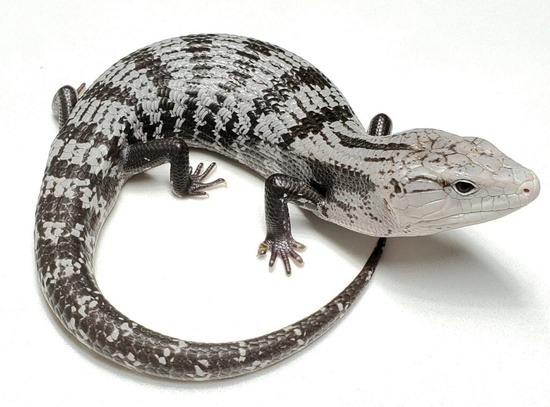
Substrate:
Substrate is the name for the floor covering in your vivarium. It is important as it permits natural behaviors. You need to use a thick layer of substrate – about 4 inches – as blue-tongue skinks like to burrow. This will not only provide physical enrichment, but will also reduce stress and help them to self-regulate humidity. You can use an organic natural soil or soil/sand mix as
substrate.
Do not use unnatural or indigestible substrates such as ‘calci-sand’, beech chips, corn cob granules or crushed walnut shells. They are dangerous because they can clog the digestive tract and cause a blockage in a condition called ‘impaction’. For permanent housing, we recommend that owners provide a naturalistic environment and also consider a bio active system. Keepers can research how to do this using expert books on the topic, or specialist keeper member groups online.
Blue-tongue Skink CARE SHEET:
COMPANY:
It is advised that you keep skinks separately due to their territorial nature. When housed together, they can bite each other’s feet or even kill each other.
Blue-tongue Skink CARE SHEET:
Handling:
Blue-tongue skinks can tolerate human interaction and handling after settling in. They do have a fairly strong bite and need time to get used to you. Never grab them as this can cause stress. The skink should be gently scooped up with both hands so all four legs are supported. If your skink backs away from you or opens its mouth to display its tongue, it is better to wait for another time.
Do not removed reptiles from the vivarium for so long that their core temperature drops. Around ten to fifteen minutes is a safe period for this, depending on the temperature outside of the vivarium. Blue-tongues have quite sharp nails so take care that they do not get them stuck in carpet or clothing.
Blue-tongue Skink CARE SHEET:

HEALTH & WELFARE:
A healthy skink should have smooth, glossy scales, a straight jaw and a thick base of the tail, as this is where essential fats are stored. You will need to register with a reptile vet so your skink has access to check-ups and
treatment as required.
Blue-tongue Skink CARE SHEET:
Shedding:
Skinks shed their skin in large pieces. There is no rule as to how often this will happen but young, growing skinks shed their skin more frequently. Your skink’s skin may appear dull when it is about to shed. The skin should then come away easily, ideally over a day or so. If this is not the case, try bathing the skink in lukewarm water, which can help soften the skin. Poor shedding is usually due to low humidity. Consult your vet if your skink constantly has issues shedding.
Blue-tongue Skink CARE SHEET:
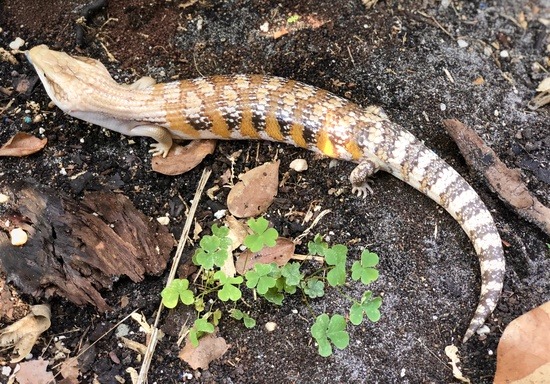
Brumation:
It is quite common for blue-tongue skinks to slow down in the colder months, which is called ‘brumation’. It is triggered by the reduction in room temperatures and natural daylight hours. They will reduce the amount that they eat whilst increasing the time spent sleeping. For a healthy skink, brumation is not of concern but seek the advice of your reptile vet if your skink suddenly stops eating rather than over a long period, or is losing a lot of weight.
Blue-tongue Skink CARE SHEET!
Diseases & concerns:
It is vital for skinks to have a varied, well thought-out diet and that the heating and lighting systems are tested to be working well at all times. Look for signs of abnormal droppings: constipation or diarrhoea; or weight loss, which can be due to internal parasites. If you have any concerns, have your vet run a parasite test on a fresh sample of droppings.
If the skink is spending long periods of time sitting in the water it may be an indicator of a skin condition or mites.
One of the most common problems for captive reptiles is metabolic bone disease, ‘MBD’, a term to describe a range of nutritional diseases. However, it is most often due to a lack of UVB lighting, resulting in vitamin D3 deficiency, preventing reptiles absorbing calcium from their food. This can cause muscle weakness and softening of the bones. The blue-tongue skink will show signs of nutritional deficiency quite quickly, for example a wave or dipping of the spine, followed by changes to the shape of the jaw.
Vitamin A deficiency can result in skin changes and secondary infection, particularly around the eyes and lips. It is essential that you take the time to research further before obtaining a reptile. If you do get a skink, monitor its health and behavior daily and see your reptile vet immediately if you have ANY of the above concerns.
Blue-tongue Skink CARE SHEET!
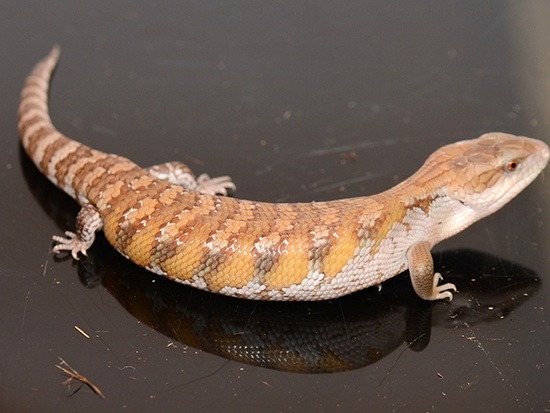
Transport:
If you need to transport your skink, do it safely. Choose a
suitable sized carrier; transport
hatching in ventilated
plastic containers with soft, absorbent
paper. transport adults in a well ventilated plastic tub to prevent injury. Keep it warm; the addition of a heat
pack may be required but make sure this
will not over-heat. Keep transit time to a
minimum to reduce stress.
Blue-tongue Skink CARE SHEET!
Conclusion:
You are now ready to be the proud papa or mama of a blue tongue skink!
Of course, this blue tongue skink care sheet is not the end-all, be-all of their husbandry, but hopefully you can come away with a little better understanding of introducing these amazing animals into your life.
We hope you found this care sheet informative and helpful, and we hope you come back to A 2 Z Reptiles any time you have any comments or questions. Like and share this article for more people to learn how to care for bearded dragons!
Blue-tongue Skink CARE SHEET:
Thank you!
Blue-tongue Skink CARE SHEET:
Check out a lot of the blue tongue skinks featured here on MorphMarket!
Want to Support our efforts? Donate! fan funding is our main source of income! Thank you!
Become a Patron!
 Buy me a coffee
Buy me a coffee

Support Our Breeding operation Click Here For Our Go Fund Me!
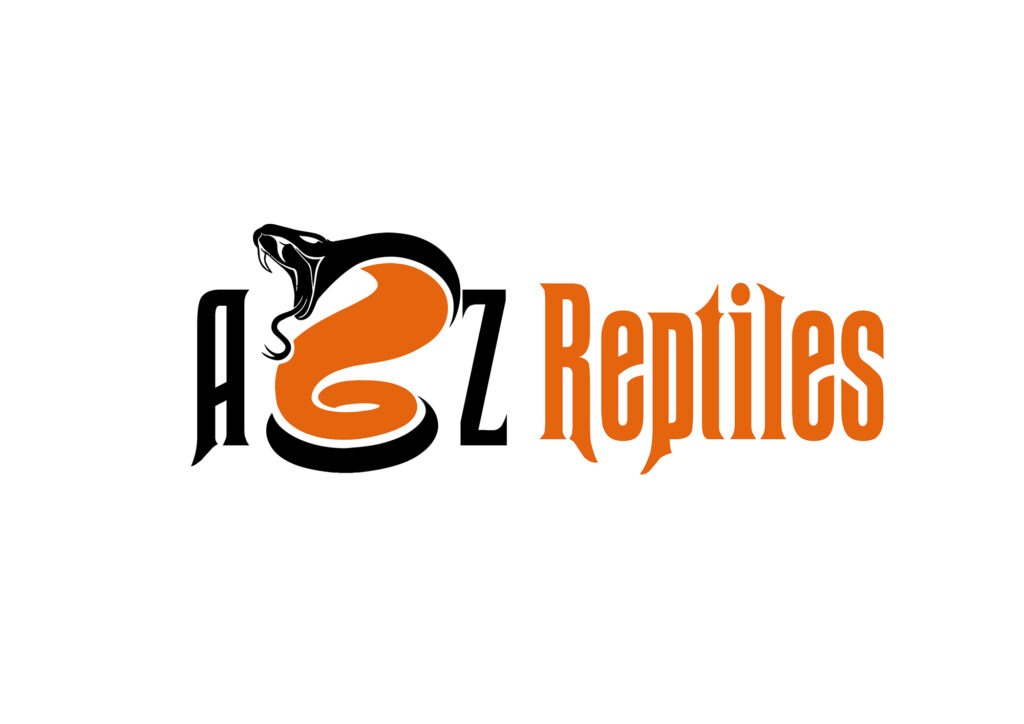

This is the link to click for a reptile or a frog! Check out this article! Click Here!
Get A Baby Tortoise! Check out This article! Click Here!
Ball Python Care Guide CLICK HERE!
Ball Python Habitat Guide!
Bearded Dragon Care Sheet!
Blue-tongue Skink CARE SHEET!
CARE SHEET FOR RED-TAIL BOA!
Reticulated Python Care Sheet!
Savannah Monitor Care Sheet!
Glass Cages!
Animal Plastics!
Custom Cages!
ARS Caging!
Custom Reptile Habitats!